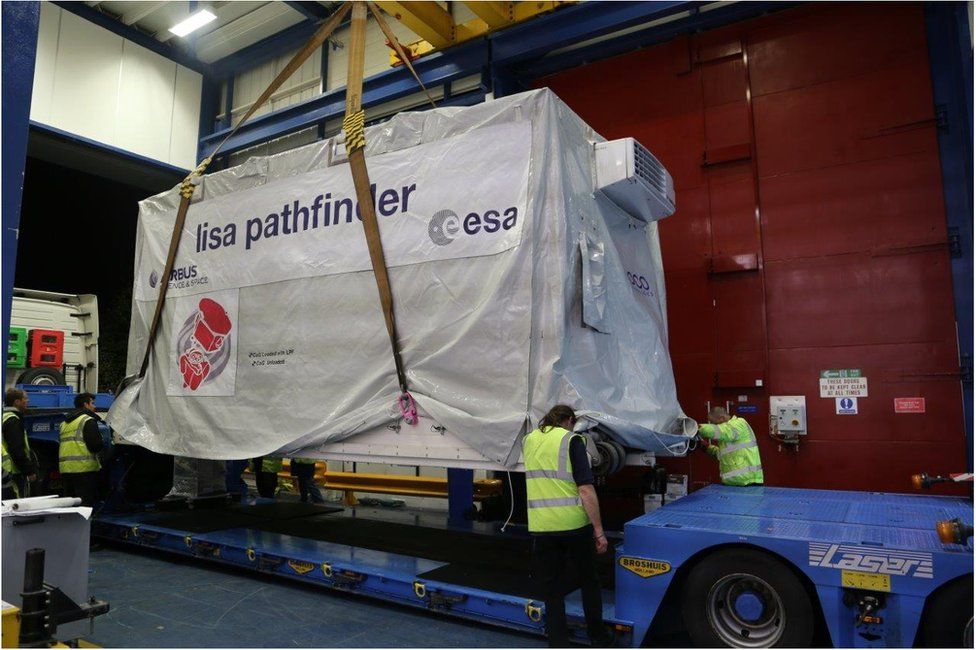Lisa Pathfinder physics probe sent to spaceport
- Published

Europe's fundamental physics space mission, Lisa Pathfinder, has arrived in French Guiana to prepare for its December Launch.
The probe, whose construction has been led from the UK, will test the technology needed to detect the warping of space-time.
LPF left its Airbus factory in Stevenage on Wednesday to catch an Antonov heavy-lift transporter.
The giant plane touched down in South America early on Thursday.
Pathfinder's next journey will be on top of a Vega rocket, which will hurl it 1.5 million km from Earth to begin its experiments.
That is likely to be on 2 December, depending on the flow of other missions going through the Kourou spaceport.
LPF is the first big European Space Agency venture to be primed industrially in Britain since Giotto, the mission that flew past Halley's comet in 1986.
Pathfinder contains just the single instrument, which is designed to measure and maintain a 38cm separation between two small metal blocks.
These "test masses" will be allowed to free-fall inside the spacecraft, and a laser system will then try to track their behaviour, following deviations down to the level of just a few picometres.
A picometre is a fraction of the width of an atom.
To put it another way, the sensitivity being demanded of the instrument is like measuring the distance from London to New York to well less than the width of a human hair.
And while this precision performance is relatively routine in Earth labs, it is very exacting to try to demonstrate it in space.
But if LPF can prove the technology, it will pave the way for an even bigger mission in the 2030s that will aim to study gravitational waves.
These are incredibly subtle ripples in space-time generated by cataclysmic events such as the merger of monster black holes.
Pathfinder has experienced an extremely tough development path.
The original industrial contract was signed with Airbus Defence and Space (under its old name, Astrium) in 2004, with a launch envisaged for 2008.
However, the immense technical challenge has seen its schedule slip by seven years. Indeed, the problems - to do with probe's delicate thrusters and the caging mechanism to hold the metal blocks - very nearly resulted in the mission being cancelled.
But such is the interest in gravitational waves that Esa member states have pushed forward with the project, and have all but approved the follow-on mission even before Pathfinder has formally demonstrated the detection techniques.
What are gravitational waves?
- Gravitational waves are ripples in the fabric of space-time generated by cosmic cataclysms such as the merger of black holes and explosion of huge stars
- Extremely sensitive measurement technology is being developed to detect them, using both Earth-based laboratories and satellite systems in orbit
- Just like light (electromagnetic radiation), gravitational waves have a spectrum, and it is the lower frequencies that space-borne observations would seek
- Targets would include the truly colossal phenomena in the Universe, such as the super-massive black holes that spiral into each other when galaxies merge
- Gravitational wave detectors would enable astronomers to open a window on this "dark" activity, potentially revealing physics beyond Einstein
Jonathan.Amos-INTERNET@bbc.co.uk and follow me on Twitter: @BBCAmos
- Published19 September 2015
- Published4 September 2015
- Published28 February 2015